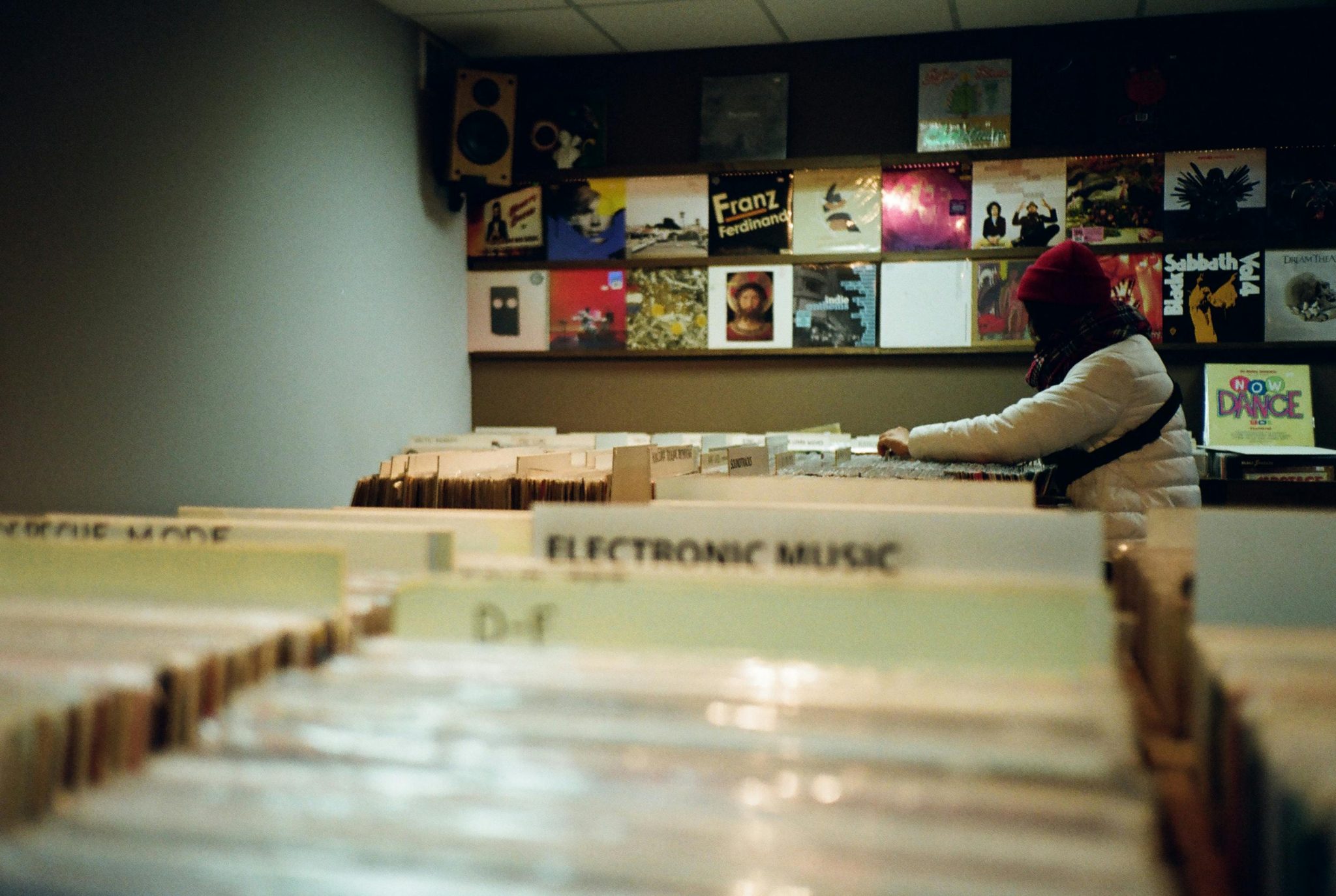
A vinyl record store. Image by Darya Sannikova under Pexels license.
How can you tell if a song is popular?
Two important measures of musical success in the US are Billboard magazine’s charts, which compare the current popularity of songs and albums, and the Recording Industry Association of America’s certification program, which aims to measure total sales. The RIAA awards the famous gold and platinum records.
Changes in technology often change these calculations. In a new article, Vincent Carter of Emory University showed how one change helped shape the development of R&B and hip-hop music.
Before the 1990s, Billboard magazine measured record sales by calling up record stores and asking for their sales numbers. This changed with SoundScan, which automatically recorded data using point-of-sale scanners. This is often praised for making charts more accurate. However, especially in the early days, not all stores had scanner technology. This was especially true of stores that served predominantly Black customers, the core audience for hip-hop and R&B music.
Carter argues that this technological disparity affected which R&B and hip-hop songs charted. To test this idea, he used data from two sources: Billboard’s charts, and the RIAA’s certification program. The Billboard charts are a relative measure of a song’s popularity at a specific time, either overall or in a specific category (in this case, R&B/Hip-Hop). The RIAA certification program is an absolute measure of how successful a song has been over time. Therefore, Carter used certification as a measure of a song’s success over time, while the charts are more short-term. In this study, Billboard’s Pop chart was used to measure a song’s mainstream popularity, while the R&B/Hip-Hop chart measured a song’s genre-specific popularity.
Before SoundScan, #1 songs that stayed for a longer time on the R&B/Hip-Hop chart and the more general “Pop” chart were more likely to be certified. After SoundScan, however, this relationship changed. Under the new system, songs that went to #1 on the R&B/Hip-Hop chart but stayed for a shorter period of time were more likely to be certified. However, certified songs were still more likely to spend longer on the Pop chart.With this change, stores that served Black African-American customers had less impact on the sales numbers, though they still drove genre-specific chart performance. The overall influence of Black consumers on the chart therefore declined thanks to SoundScan’s technological disparity. The R&B/Hip-Hop charts were still measuring a song’s performance on R&B and hip-hop radio, better capturing Black audiences’ taste. Over time, genre-specific chart performance became “decoupled” or split off from the sales numbers.
Carter argues that this disempowered Black audiences, affecting which artists became successful and which types of music were made.

Comments